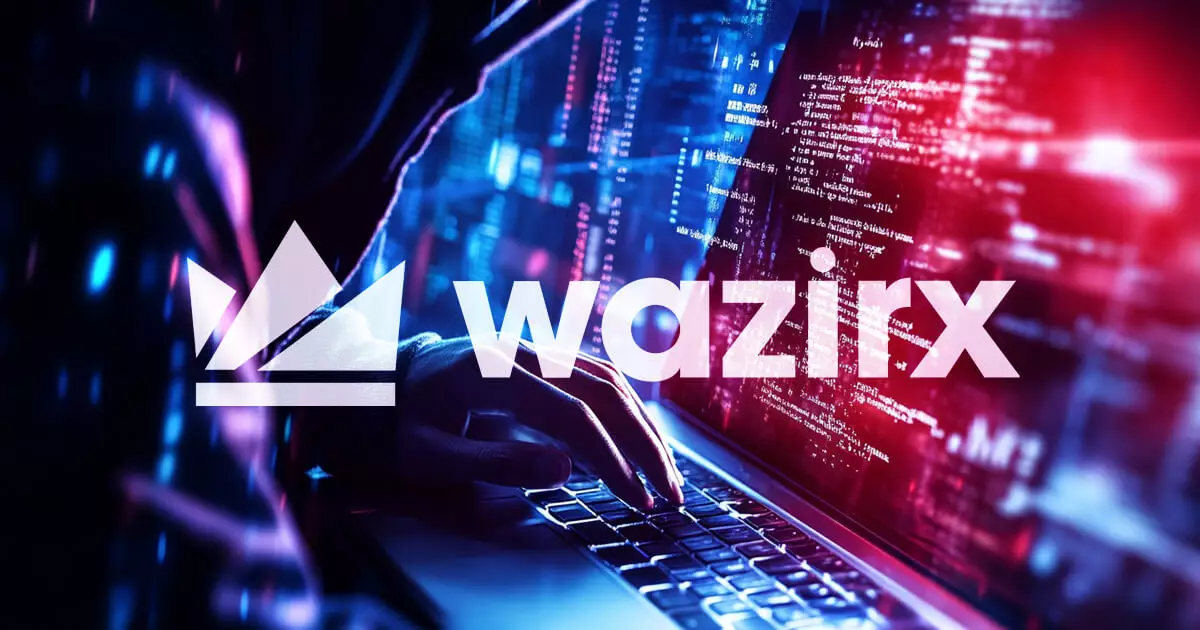In a startling revelation within the cryptocurrency industry, the Delhi Police have made headway in their investigation into a significant security breach at WazirX, a prominent crypto exchange. This incident, which has resulted in a staggering loss estimated at $235 million, raises pressing questions about user security and the responsibilities of digital asset custodians. The investigation led to the arrest of SK Masud Alam, who allegedly orchestrated the breach using a fraudulent account under the pseudonym “Souvik Mondal.” By examining the methods employed in this breach, we can gain insights into the vulnerabilities present in cryptocurrency exchanges and the ramifications of these lapses.
The crux of the issue lies in Alam’s alleged creation of a fake account on WazirX, which he sold through the messaging platform Telegram to a co-conspirator identified only as M. Hasan. This case exemplifies the growing sophistication of cybercriminals and their ability to exploit the intricacies of online platforms. Authorities have since confiscated three laptops belonging to WazirX’s authorized signatories, aiming to investigate potential misuse of multisig wallets—an essential security feature designed to protect assets. This suggests that even with advanced security measures, breaches can occur if individuals leverage social engineering tactics and fraudulent identities.
Despite WazirX’s cooperation in the investigation, which included providing detailed KYC data and transaction history, the Indian Cyber Crime Coordination Centre reported no evidence of internal system breaches. This raises an essential aspect of cybersecurity protocols: the need for verifying external elements engaging with internal systems. The situation underscores a vital truth: sometimes, security breaches originate not from technical flaws but from a lack of stringent identity verification processes.
Liminal, the digital asset custody provider originally tasked with securing WazirX’s wallets, has come under scrutiny due to alleged non-cooperation with the authorities. Reports indicate that repeated requests for relevant information were ignored, leaving investigators at an impasse. This aspect highlights the critical importance of collaboration and transparency among stakeholders in the cryptocurrency space. The current debacle emphasizes how vital it is for custodians and exchanges alike to maintain robust communication lines in times of crisis. These tools are not only necessary for restoring investor confidence but also for effectively addressing potential vulnerabilities.
The fallout from blame trading between WazirX and Liminal only exacerbates the situation. Each party has cast aspersions on the other’s practices, generating an environment of distrust that complicates recovery efforts. This blame game can be damaging to both parties, eroding trust within the larger crypto community at a time when security concerns are already at the forefront.
In light of this crisis, WazirX is taking proactive steps toward financial recovery for its creditors. Their strategy includes reopening the trading platform to restore activity and generate revenue. The exchange plans to share fees accrued during this period with creditors, thereby creating a direct financial lifeline. Such measures demonstrate a commitment to transparency and accountability in the face of adversity.
In addition to reviving trading operations, WazirX aims to innovate by diversifying its revenue streams. Plans include launching a decentralized exchange (DEX), staking functionalities, an over-the-counter (OTC) desk, and futures trading. These initiatives reflect a broader industry trend towards creating more comprehensive trading ecosystems designed to attract users. The emphasis on user experience is essential; in a crowded marketplace, retaining user trust is key.
Furthermore, WazirX is also exploring legal channels to recover lost and illiquid assets, asserting that they aim to safeguard these assets for creditors. This step highlights the importance of protecting stakeholder interests and retaining trust in the cryptocurrency sector. As funds are a primary concern, the process involves meticulous tracking and preventing unauthorized withdrawals.
The breach experienced by WazirX serves as a grim reminder of the existing vulnerabilities within the cryptocurrency landscape. As stakeholders navigate the complexities of security, the recent events imply several lessons the broader crypto community must heed. Strengthening identity verification, fostering open communication among parties, and prioritizing user safety should be at the forefront of all exchange protocols. The implications of not addressing these challenges could threaten the stability of not just individual exchanges but the entire digital currency ecosystem. As WazirX embarks on its recovery journey, it must work diligently to regain user confidence and set a precedent for secure practices in the industry, demonstrating resilience amidst adversity.

